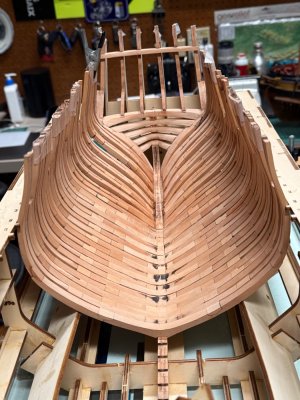Gunther,Wow Alex,
that's awesome! Great work and you are so incredibly fast.
May I ask what glue you use?
Best regards
Günther
Thank you.
I do have a really nice workshop. I put a lot of thought into it. It is my "man cave" and spend a lot of time here-often just reading and, of course, falling asleep in my chair.
I use Tight-Bond PVA wood glue, to which I have added a small amount of graphite powder to turn it black-gray. I use an applier with a 20 gauge needle to apply it. I often add a tiny drop of StarBond thin Superglue (also applied with a micro-tip) to a joint as the PVA is curing...This mixture solidifies well and turns rock hard very quickly, so don't use it if you need time to move the piece. StarBond glues come in a variety of thicknesses and colors, so I use them often-different ones for different applications as they have various curing times.
Danke
Alex R



 . Cheers Grant
. Cheers Grant





